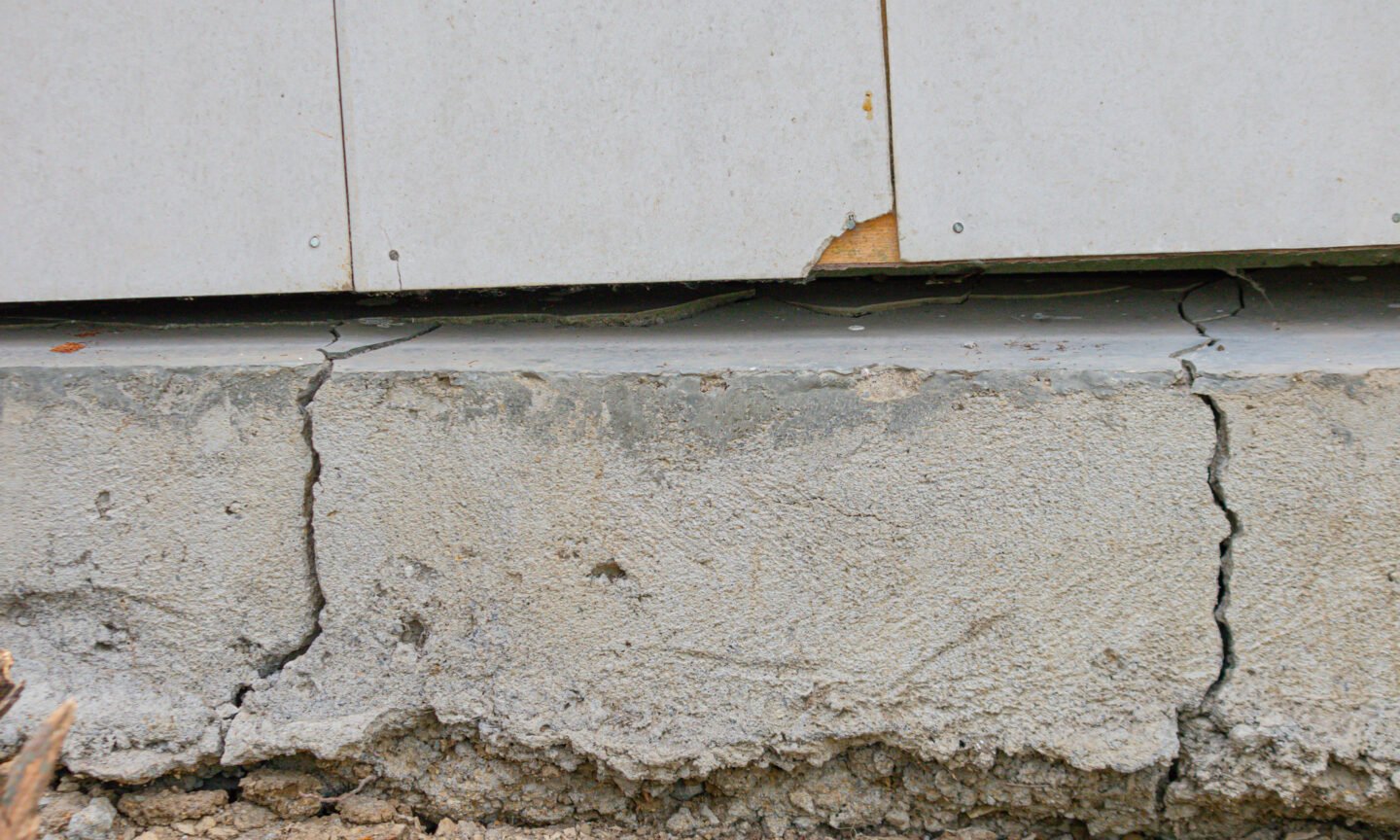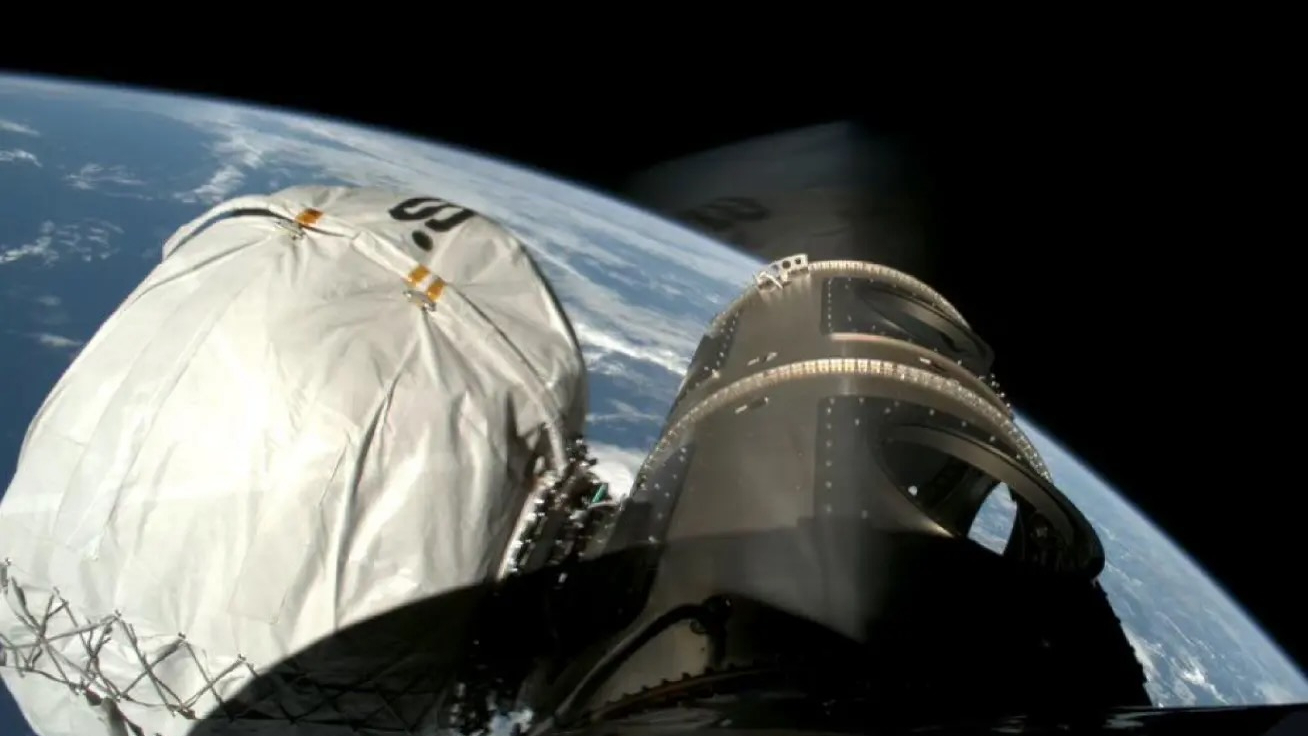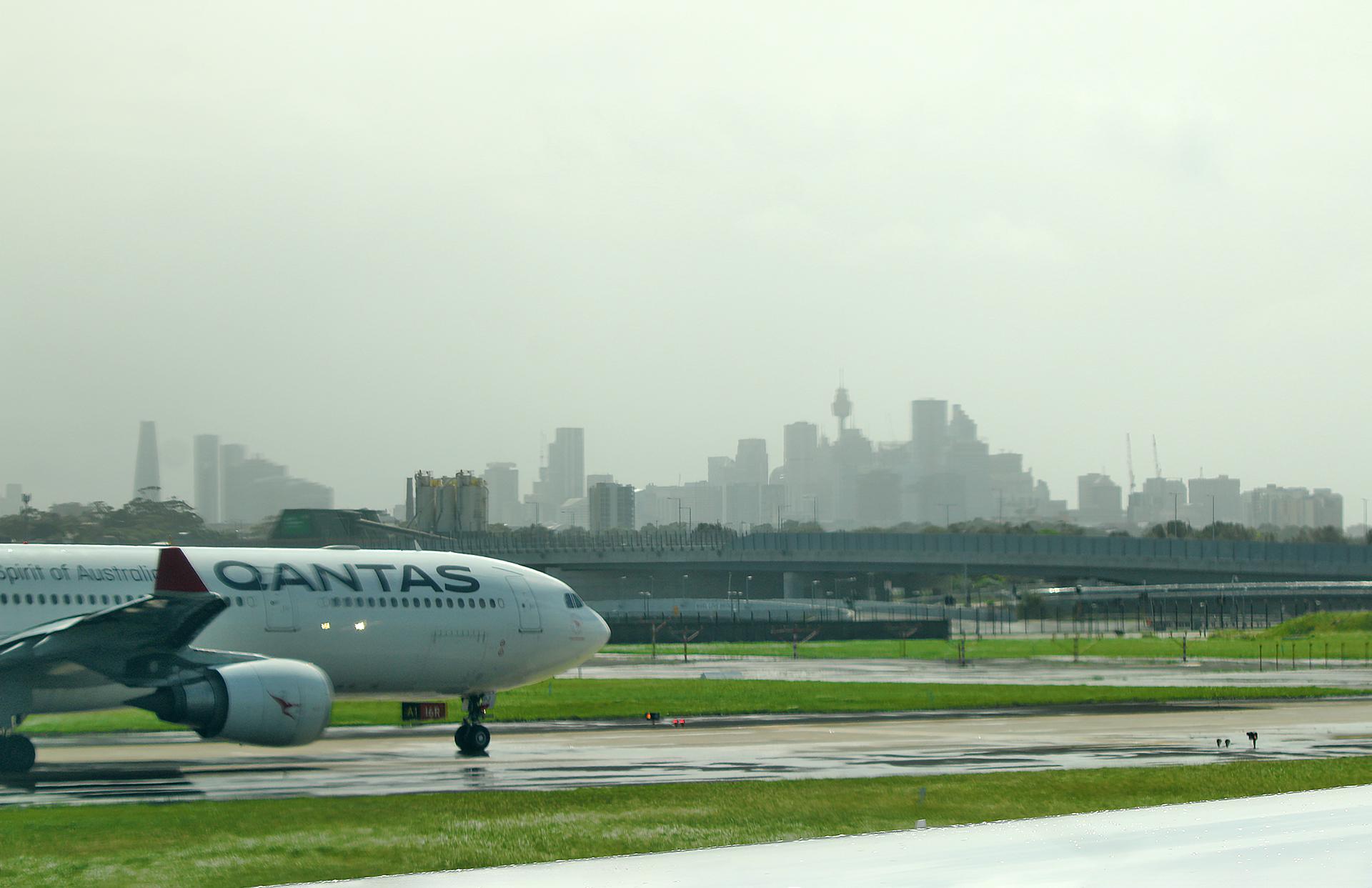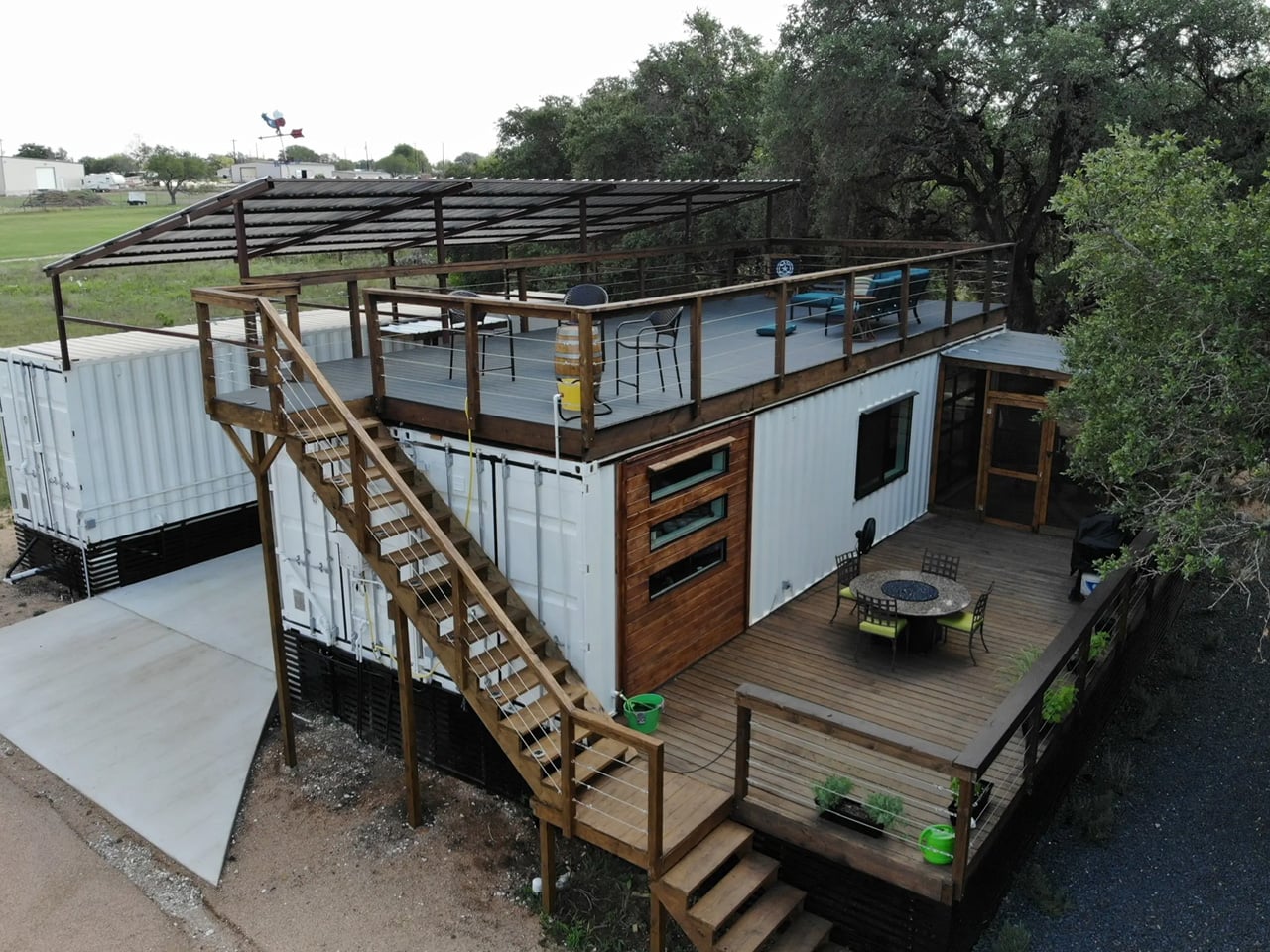The One Exercise Top Lifters and Personal Trainers Use to Build Bigger, Healthier Shoulders
Unlock next-level shoulder gains with this simple yet powerful isolation move.
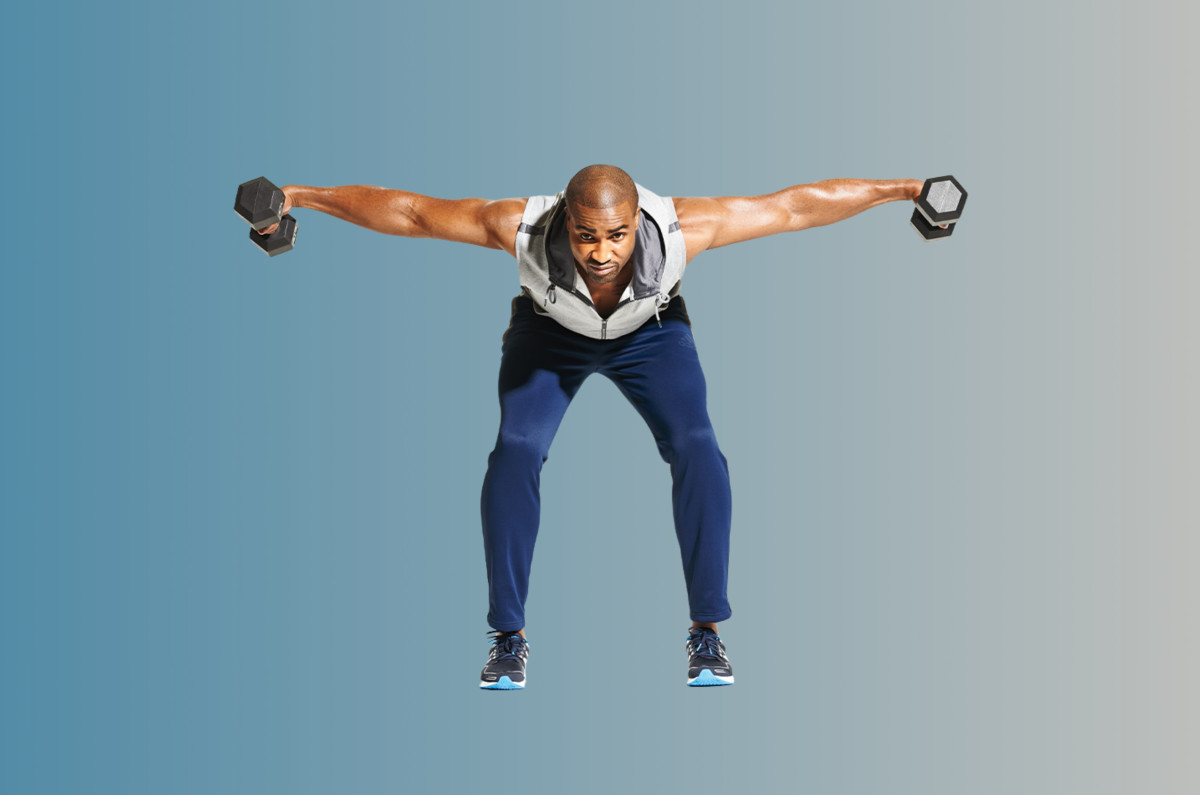
If you’re gunning for grapefruit-shaped shoulders, there's a good chance you're crushing overhead presses and gritting your teeth through sets of lateral raises. While these moves undoubtedly build mass, they also place a ton stress on the anterior and medial heads of your deltoid—the front and sides of the shoulder cap. So if you want to build your shoulders without the wear and tear, the rear delt fly should be one of your go-to moves.
“People don’t take the time to isolate the rear delts the way they do the medial and anterior [front] of the delt,” says Shawn Arent, Ph.D., C.S.C.S., chair of the Department of Exercise Science at the University of South Carolina. That’s partially because of what we see when we look in the mirror, he says—the fronts of our shoulders, and how wide the sides make us look. But other people can see the posterior, and more importantly, you’re using the backs of your shoulders every day. “From a shoulder stability standpoint, the posterior delts are important, and they’re really important for pulling motions.”
Another reason this part of the muscle gets missed: When it’s out of sight, it’s out of mind, says Ryan Koziol, personal trainer and owner of RYKO Fitness.
“You get a little bit more mind-muscle connection to muscles you can see…you can flex that muscle a little to wake it up,” he says, so you know what it feels like when the muscle’s working. This phenomenon may also contribute to the shoulder exercises we select. “We do front raises and lateral raises, but we forget to do our rear delt raises or face pulls.”
Make those shoulders into full, rounded boulders with these tips for the rear delt fly, coaching cues from Koziol and Arent, and variations that will help you find the right delt-pumping move for your workout.
Want the latest fitness advice and workouts to tackle any adventure? Sign up for our Blueprint newsletter. James Michelfelder
How to Do the Rear Delt Fly
- Stand with your feet together, dumbbells hanging in front of your thighs, palms facing in.
- Push your hips back to bend forward, keeping your back flat as your chest moves towards the floor. The weights should hang down from your shoulders, palms facing in, and elbows slightly bent.
- Brace your core, maintain a flat back, and concentrate on pulling with the back of your shoulders to raise the dumbbells out to the sides. As you do so, your shoulder blades will come together behind you. At the top of the move, your body should form a bent-over “T” shape.
- Pause for a beat at the top, then control the weights back down to the hanging position.
- Perform 3-4 sets of 8-15 reps.
Rear Delt Fly: Muscles Worked
The muscle you’re targeting with this move is the posterior deltoid, the rear part of your shoulder cap. But this move will also activate the middle deltoid, on the side of the shoulder cap, as well as the infraspinatus, a shoulder muscle that covers much of your shoulder blade.
Back muscles also get involved, specifically the trapezii, which are in your upper back, up to your neck, and the rhomboids, which are between your shoulder blades.
Related: Should You Do Cardio Before or After Weights? Here’s What Trainers Recommend
Get the Most Out of the Rear Delt Fly: Coaching Tips and Common Mistakes
One of the most common mistakes lifters make with the rear delt, Arent says, is choosing a weight that’s too heavy. When they do this, they swing and flail the weights up to the side, and wind up using more of the muscles in the middle of the back—the rhomboids, lower trapezii, and the lats.
“Now, don’t get me wrong. As soon as you’re talking about the rear fly motion, you’re going to activate the rhomboids and the traps,” he says. But when you go too heavy and swing the weights, these muscles don’t just get involved, but take over the part of the stimulus you’d usually get in the rear delt. Using a lighter weight, he says, can let you concentrate on initiating the pull with the back of the shoulders, improving the mind-muscle connection.
Another way to get more rear delt activation, Koziol suggests: Bend you elbows a bit during the exercise, and think about pulling your elbows up and trying to touch them together behind your back instead of concentrating on the weights going to the sides.
Some Other Tips for Maximizing This Move
Maintain a Neutral Back
Maintain a neutral back instead of retracting your shoulder blades. For many pulling and pressing exercises, we’re taught to retract our shoulder blades before starting, tucking them back and down. But on the rear delt fly, Arent says, this activates the mid-back too soon.
“Try to maintain a fairly neutral back, and pull more with the rear delts to start,” he says. As your arms separate, your shoulder blades will naturally come together.
To further isolate the rear delt from the mid-back muscles, Arent suggests trying the side-seated machine reverse fly described below.
Utilize a Neutral Grip
Start with a neutral grip, but experiment with others. Conventional—and scientific—wisdom says that the neutral grip, with palms facing each other, is king. In a 2013 study, scientists found that when performing a reverse fly on a machine, the rear delt was activated more with a neutral grip than when the same move was done with palms facing down so that the thumbs are together at the start of the move.
That doesn’t mean the other grips don’t work, though. The study used a machine rear fly, not free weights, and the amount the rear delt contracted with the neutral grip was greater on average, but not for every rep or every person.
Arent’s advice: Start with a neutral grip, but experiment with others. If you’re feeling it more in the posterior delt with another grip, that can work for you.
Place Your Head on an Incline Bench
To minimize bounce in your upper body, Arent suggests placing a towel at the head of an incline bench, standing behind the bench, and placing your forehead on the towel as you bend forward to do this move.
“Now your upper body’s not swinging up and down,” he says. “You’ll be amazed at how much heavier you can’t go once you really start to isolate like this.”
Related: The One Move That Serious Lifters Swear By for Bigger Shoulders and Advanced Pressing Power
Rear Delt Fly Variations
If you don’t feel comfortable in the bent-over position, don’t feel the move in your rear delts, or are just looking for more ways to challenge the backs of your shoulders, try one of these variations:
Seated Dumbbell Reverse Fly
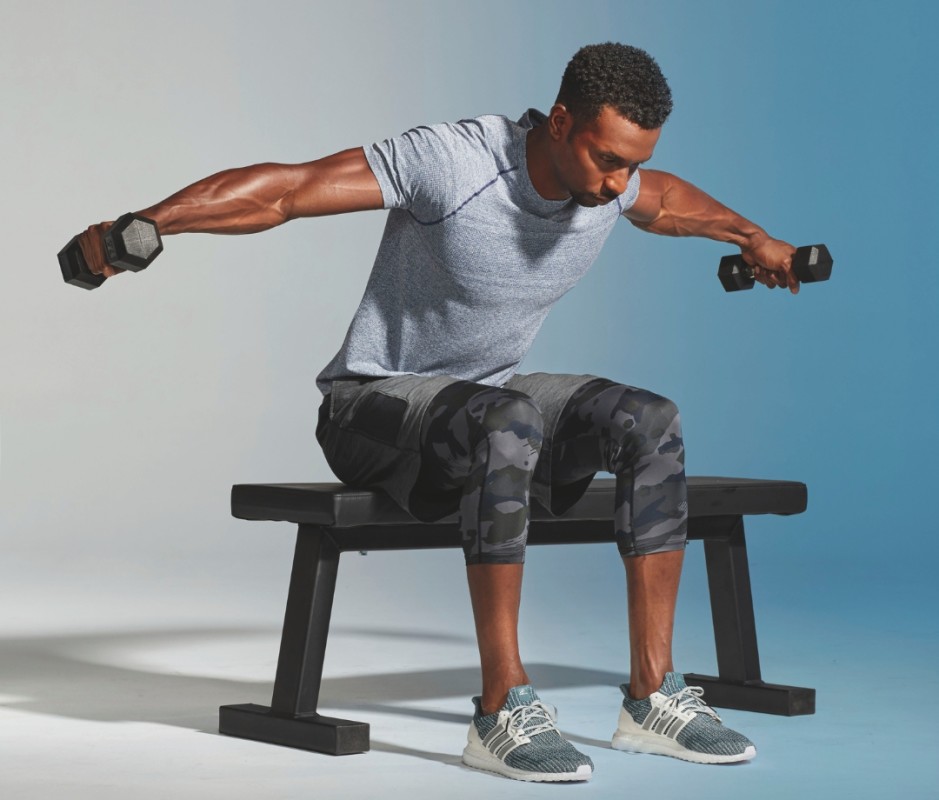
Justin Steele
How to Do It
- Sit on the edge of a bench with your feet and knees together, and dumbbells at the sides of your feet.
- Bend forward at the waist so your chest is on your thighs, and grab the dumbbells, palms in.
- Now, perform a reverse fly while still bent over in this way. Keeping a slight bend in your elbows, pull the weights up and out to the sides until your torso forms a “T” shape.
- Control the weights back to the start position. Repeat.
Incline Bench Rear Delt Fly
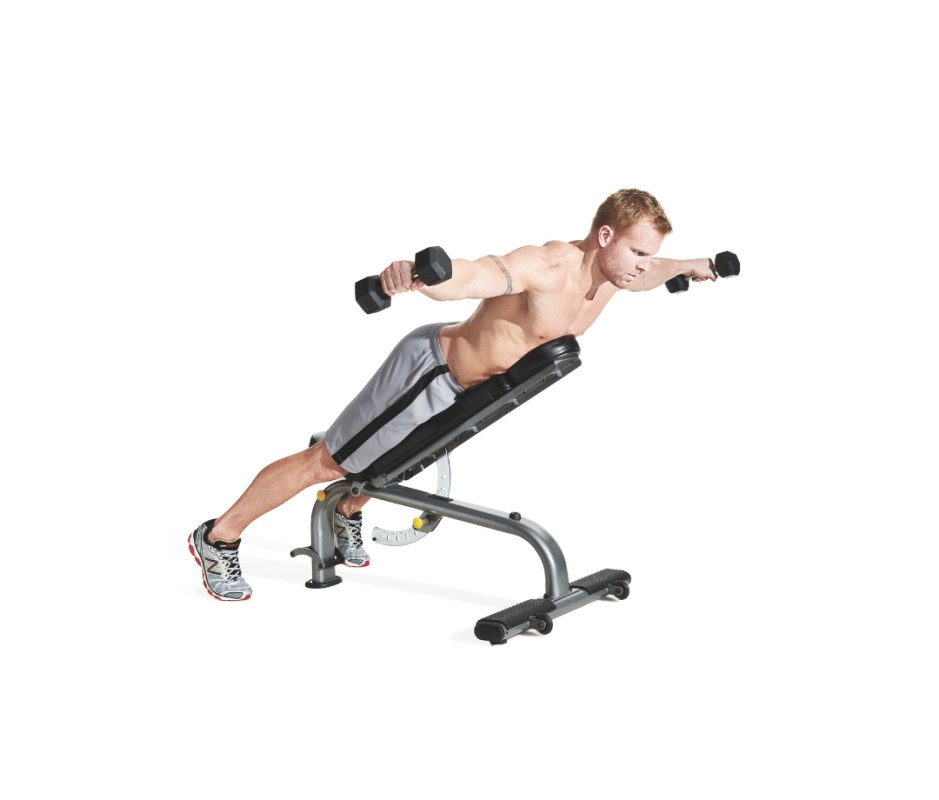
Beth Bischoff
How to Do It
- Lie facedown with your chest on an incline bench, holding dumbbells to the sides of the bench, palms facing in. Your face should not be on the pad.
- Keep your head and neck aligned with your spine. Brace your core.
- Keeping a slight bend in your elbows, pull the weights up and out to the sides until your torso forms a “T” shape.
- Control the weights back to the start position. Repeat.
Machine Reverse Fly
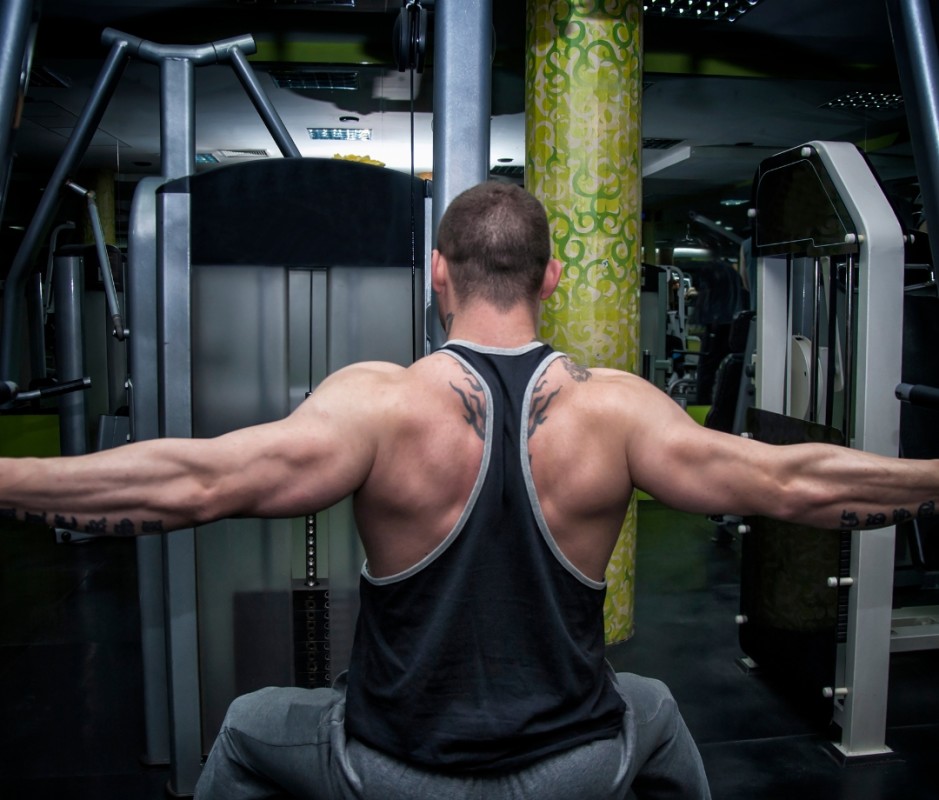
Getty Images/Goja1
How to Do It
- Sit tall in the pec deck/reverse fly machine, with your chest against the back pad and feet flat on the floor. Grab the handles with a neutral grip, palms in.
- Maintaining a proud chest, pull the handles out to the sides until your body forms a “T” shape.
- Control the weight back to the start position. Repeat.
Standing Cable Reverse Fly
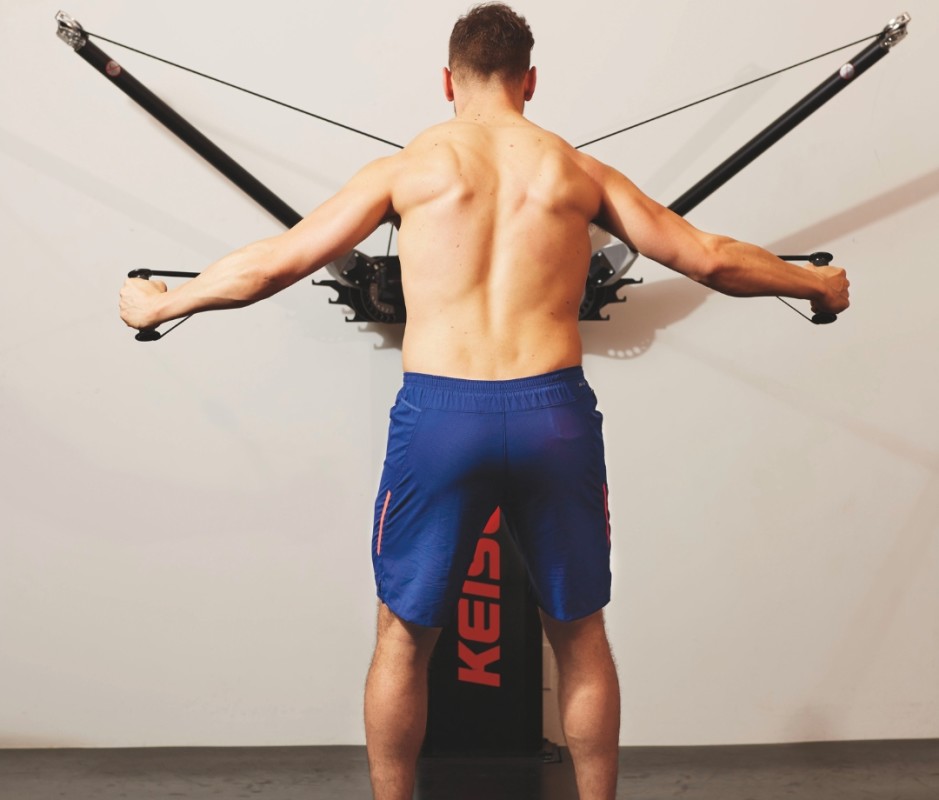
Justin Steele
How to Do It
- Stand with feet shoulder-width apart in front of a cable cross machine or two-cable stack with the handles set at shoulder level. (You can also do this move with the cables set up higher, so the anchor point is just above eye level.)
- Grab the handles with the opposite hand—right handle in your left hand, left handle in your right hand—so that your arms form an X.
- Squeeze your butt and tighten your core.
- Keeping a slight bend in your elbows, pull the cables out until your arms form a T shape. Return to the X and repeat.
Resistance Band Reverse Fly
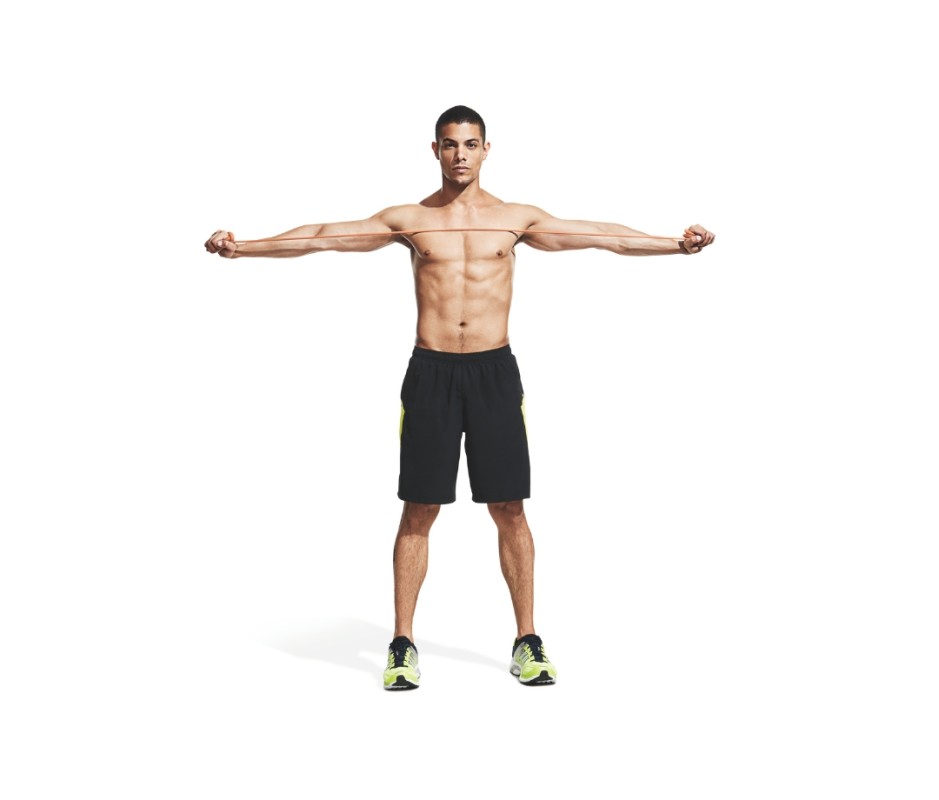
Beth Bischoff
How to Do It
- Anchor a resistance band in front of you at shoulder or eye level. Grab the handles in front of you with a neutral grip, and step back until the band is tighter, but not fully taut.
- Stand with feet shoulder-width apart. Squeeze your butt and tighten your core.
- Keeping a slight bend in your elbows, pull the bands out until your arms form a T shape. Return to start and repeat.
Cable Face Pull
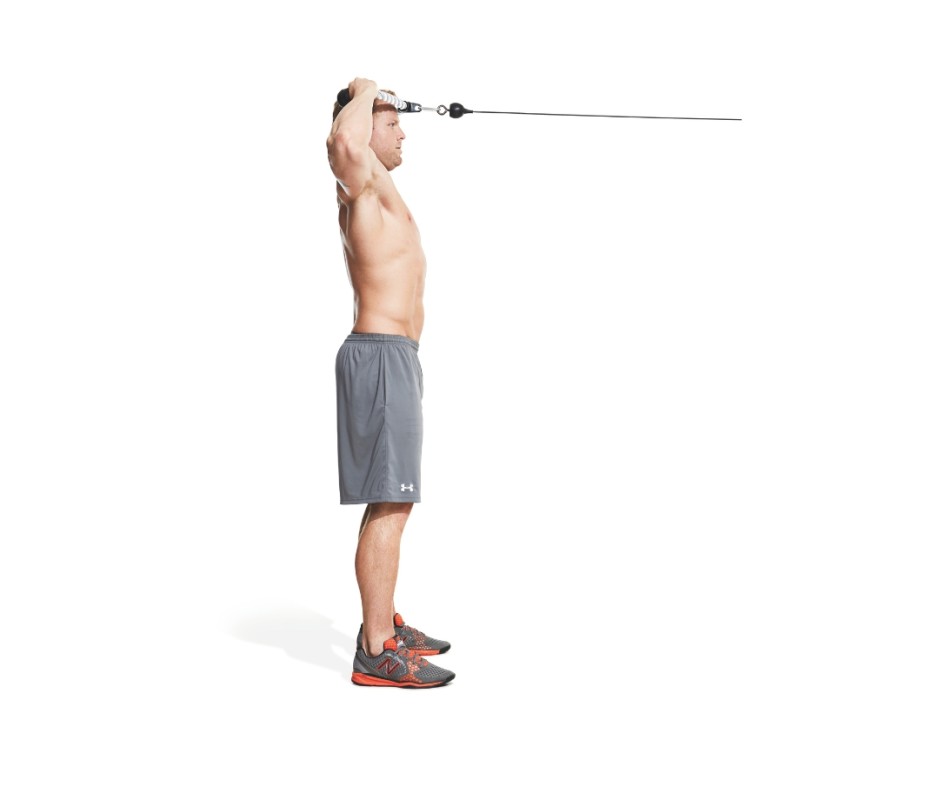
Beth Bischoff
- Set the anchor of a cable machine at eye level. Attach a tricep rope.
- Grab one end of the rope with each hand so the balls of the rope are on the thumb/index finger sides of your hands. Bend your elbows up in front of you so your palms face each other.
- Take a step back to make the rope taut and bend your knees slightly, feet at shoulder-width distance.
- Pull the center of the rope—the metal anchor in the middle—toward your forehead.
- At the same time, draw each elbow to your sides in line with your shoulders at a 90-degree angle. At the finishing position, your hands should be by or past your ears, elbows pointed down.
- Hold this position for a second or two, squeezing your shoulder blades together.
- Reverse the move to return to the start and repeat.
Related: This German Strength Training Method Is 2X More Effective for Muscle Growth






